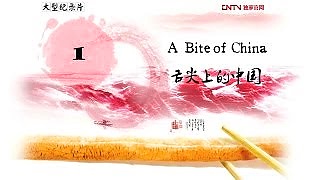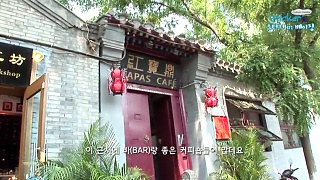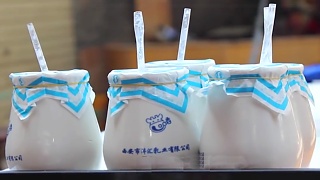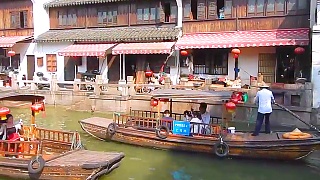In BeiJing alone, there are around 200,000 places to eat, so you'll never be far from a tasty meal and there is so much to try that China is very much a foodie heaven.
Here's BeiJingBuzzz's cheat sheet of popular food dishes that you will love. Feel free to print out for personal use ...
Huo Guo (火锅) : 'Hotpot' - order what you like and cook it in a steaming broth that can be spicy, mild or both. Served with a sesame sauce topped with coriander and / or spring onion; with vinegar and soy sauce as additional options. Thinly sliced meats, all manner of vegetables, noodles, eggs, tofu and more. Be sure to try Dong Dofu (iced tofu) and Dofu skin - super delicious in Huo Guo. There are many independents but you cannot go wrong if you see a XiaBu XiaBu, a very popular restaurant chain.
Mābo Dōfu (麻婆豆腐) : soft beancurd in a spicy sauce with minced pork
BaoZi (包子) : steamed buns filled with meat or vegetables
JiaoZi (饺子) : boiled or pan-fried dumplings filled with meat or vegetables
RouJiaMo (肉夹馍) : a sandwich made with flatbread and filled with meat (most commonly pork)
CongYou Bing (葱油饼) : spring onion / scallion pancakes - a savory flatbread made with scallions and flour
ZhengJiao (蒸饺) : steamed or pan-fried dumplings filled with meat or seafood
ZongZi (粽子) : glutinous rice dumplings wrapped in bamboo leaves
GouBuLi BaoZi (狗不理包子) : steamed buns filled with meat or vegetables, popular in Tianjin
DouHua (豆花) : sweet tofu pudding
XiaoLongBao (小笼包) : steamed dumplings filled with meat or seafood and soup
Xī Hóng Shì Chǎo JīDàn (西红柿炒蛋): egg and tomato - a popular dish in Chinese cuisine, it is often a simple and comforting dish, that can be found in many Chinese home-style cooking. It is typically made by stir-frying diced tomatoes and beaten eggs together with some seasonings, such as salt, pepper, and sometimes soy sauce.
DanDan Mian (担担面): a spicy Szechuan noodle dish made with thin wheat noodles, a spicy chili oil-based sauce, and often ground meat
JianShui Zhu (建水煮): fried vermicelli noodles popular in Yunnan province
LanZhou LaMian (兰州拉面): hand-pulled noodles popular in Lanzhou, Gansu province
ReGan Mian (热干面): Wuhan hot dry noodles - a spicy dish made with thin wheat noodles, chili oil and ground meat, popular in Wuhan, Hubei province
ZhaJiang Mian (炸酱面): a dish of thick wheat noodles served with a fermented soybean paste sauce and vegetables, popular in northern China
ZhaJiangMian (炸酱面): a dish of thick wheat noodles served with a bean paste sauce, popular in northeastern China
GuoTie (锅贴): Chinese fried dumplings
MaLaTang (麻辣烫): a spicy hotpot popular in Sichuan and Chongqing
Di San Xian (第三鲜): a popular dish in Chinese cuisine, typically found in northern China, it is a type of stir-fry dish made with three main ingredients: potatoes, eggplant, and bell peppers, it is also called "Three Fresh" or "Three Precious Vegetables". It is typically stir-fried with garlic, ginger, and scallions, and seasoned with soy sauce, sugar, and sometimes oyster sauce.
GōngBǎo JīDīng (宫保鸡丁) : also transcribed Gong Bao, Kung Pao or Kung Po, is a spicy, stir-fried Chinese dish made with cubes of chicken, peanuts, vegetables, and chili peppers. A classic dish in Sichuan cuisine.
JīSī Liáng Miàn (鸡丝凉面) : Chinese Chicken Noodle Salad - Chinese chicken noodle salad features noodles tossed in a nutty savory sesame sauce and topped with shredded chicken and cucumber.
Hei Jiao Niu Liu (黑椒牛柳) - Sliced tender beef with onions, peppers and black pepper.
Huo Guo - hot pot
There are also around 6,000 McDonalds in China, plus Burger King, KFC, Pizza Hut, Subway and more. And if you like cooking from scratch yourself, you'll find many huge supermarkets plus local markets.
Chinese cuisine is an intricate tapestry of flavors, techniques, and regional specialties that has evolved over thousands of years. From the fiery spices of Sichuan to the delicate dim sum of Cantonese cuisine, every region of China offers its own culinary delights. For visitors to China, exploring the diverse and dynamic world of Chinese food is an essential part of experiencing the country's rich cultural heritage. Here's a more extensive exploration of Chinese cuisine for visitors:
Regional Diversity:
Sichuan Cuisine: Hailing from the southwestern province of Sichuan, this cuisine is famed for its bold, spicy, and numbing flavors. Sichuan peppercorns, chili peppers, and aromatic spices are used liberally in dishes like Mapo Tofu, Dan Dan Noodles, and Sichuan Hot Pot, creating a symphony of flavors that tingles the taste buds.
Cantonese Cuisine: With its emphasis on fresh ingredients and delicate flavors, Cantonese cuisine is highly regarded for its seafood dishes, roasted meats, and dim sum. Steamed fish, Char Siu (barbecue pork), and Har Gow (shrimp dumplings) are just a few examples of the exquisite dishes that showcase Cantonese culinary mastery.
Shanghai Cuisine: Reflecting its coastal location and cosmopolitan history, Shanghai cuisine combines influences from Jiangsu, Zhejiang, and Anhui provinces. Sweet and Sour Mandarin Fish, Shanghai Soup Dumplings (Xiaolongbao), and Drunken Chicken are some of the signature dishes that highlight the diverse flavors and textures of this culinary tradition.
Beijing Cuisine: As the capital of China, Beijing boasts a rich culinary heritage deeply rooted in imperial traditions. Peking Duck, a dish with crispy skin and succulent meat served with pancakes and hoisin sauce, is a quintessential Beijing delicacy. Other notable dishes include Zhajiangmian (Beijing Noodles), Mongolian Hot Pot, and Beijing-style meat pies.
Hunan Cuisine: Known for its bold and aromatic flavors, Hunan cuisine features dishes that are spicy, sour, and intensely flavorful. Chairman Mao's Red-Braised Pork, Dong'an Chicken, and Steamed Fish Head with Chopped Chili exemplify the fiery and robust nature of Hunanese cooking, which makes ample use of chili peppers, garlic, and fermented ingredients.
Street Food and Snacks:
Jianbing: This savory Chinese crepe is a popular breakfast option, consisting of a thin pancake filled with eggs, scallions, cilantro, and various fillings such as crispy fried dough, pickled vegetables, or chili sauce.
Baozi: These steamed buns are filled with a variety of savory or sweet fillings, including pork, vegetables, or red bean paste. Baozi are a popular street food snack and can be found in teahouses, markets, and street stalls across China.
Roujiamo: Often referred to as Chinese Hamburgers, roujiamo features savory braised meat stuffed inside a flatbread, offering a hearty and flavorful snack that's perfect for on-the-go eating.
Dining Etiquette and Customs:
Family-Style Dining: Chinese meals are typically served family-style, with multiple dishes shared among diners seated around a table. It's customary to use chopsticks to pick up food from communal dishes and to serve elders before oneself.
Toasting and Ganbei: When dining with Chinese hosts, expect toasts (ganbei) with alcohol, usually baijiu (Chinese liquor). It's polite to reciprocate the toast and drink in moderation, but declining politely is acceptable if you don't drink alcohol.
Tea Culture: Tea is an integral part of Chinese dining culture, with a wide variety of teas available to complement different dishes. Green tea, oolong tea, and pu'er tea are among the most popular choices, and serving tea to guests is a sign of hospitality and respect.
Street Markets and Night Markets:
Wangfujing Snack Street, Beijing: Located near the Forbidden City, this bustling street market offers a wide variety of traditional snacks, street food, and local delicacies. Visitors can sample everything from scorpions on a stick to traditional Beijing snacks like Jianbing and Tanghulu (candied fruit skewers).
Shanghai Old Street, Shanghai: Nestled in the heart of the city's historic district, Shanghai Old Street is a bustling marketplace where visitors can explore narrow alleyways lined with traditional shops, street vendors, and food stalls. From steamed dumplings and stinky tofu to hand-pulled noodles and sugar-coated haws, there's something to satisfy every craving.
Dietary Considerations:
Vegetarian and Vegan Options: While Chinese cuisine traditionally features a wide range of meats and animal products, vegetarian and vegan options are becoming increasingly available, especially in larger cities and tourist destinations. Buddhist restaurants (????, s�sh� c?nt?ng) often offer meat-free versions of classic dishes, and plant-based ingredients like tofu, mushrooms, and seasonal vegetables are widely used in Chinese cooking.
Exploring the diverse and delicious world of Chinese cuisine is an essential part of any visit to China. From regional specialties and street food snacks to dining etiquette and cultural customs, the culinary landscape of China offers a rich tapestry of flavors, traditions, and experiences that are sure to delight and inspire visitors from around the world. Bon app�tit!.
 Get ready for China – great food dishes
Get ready for China – great food dishes



















